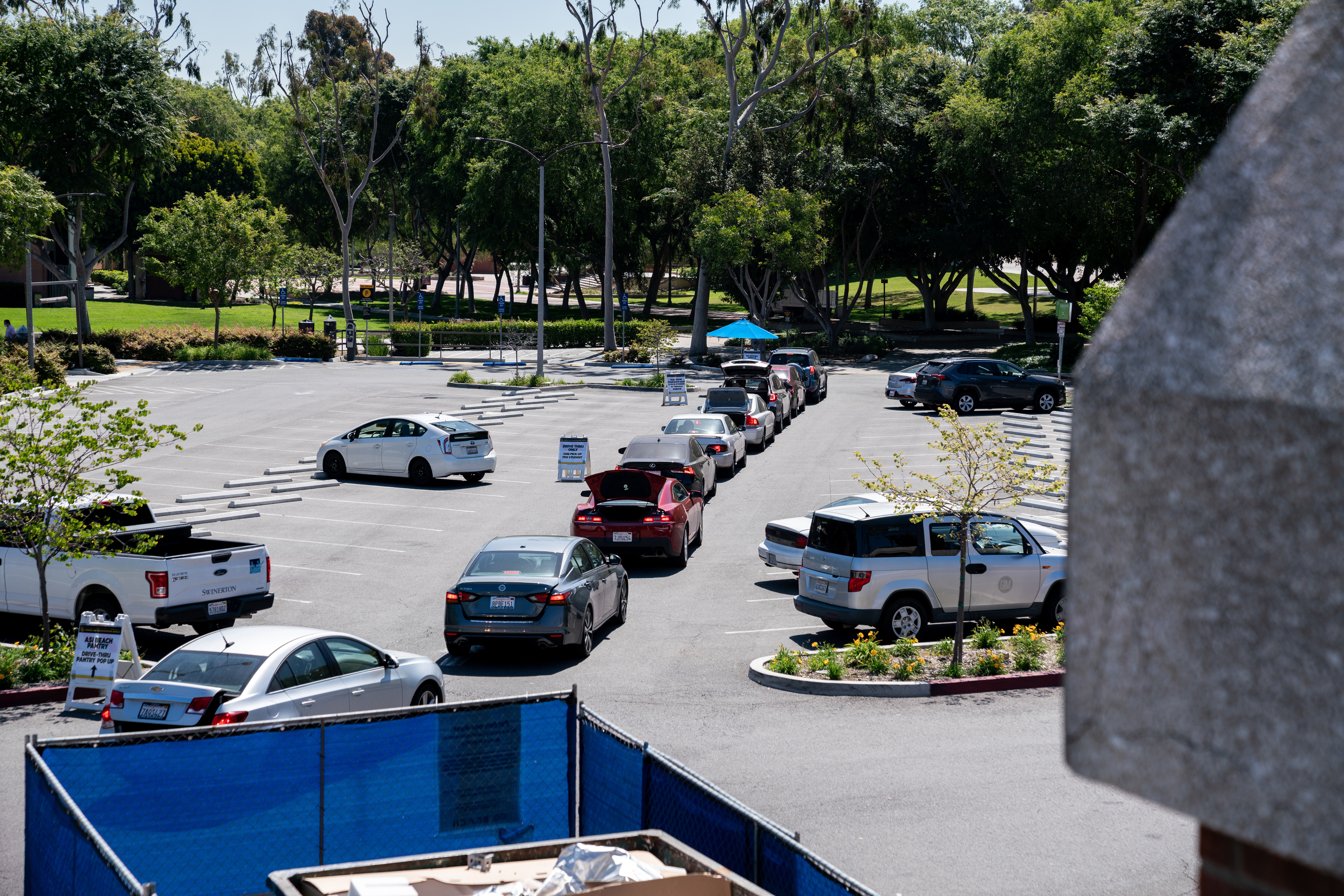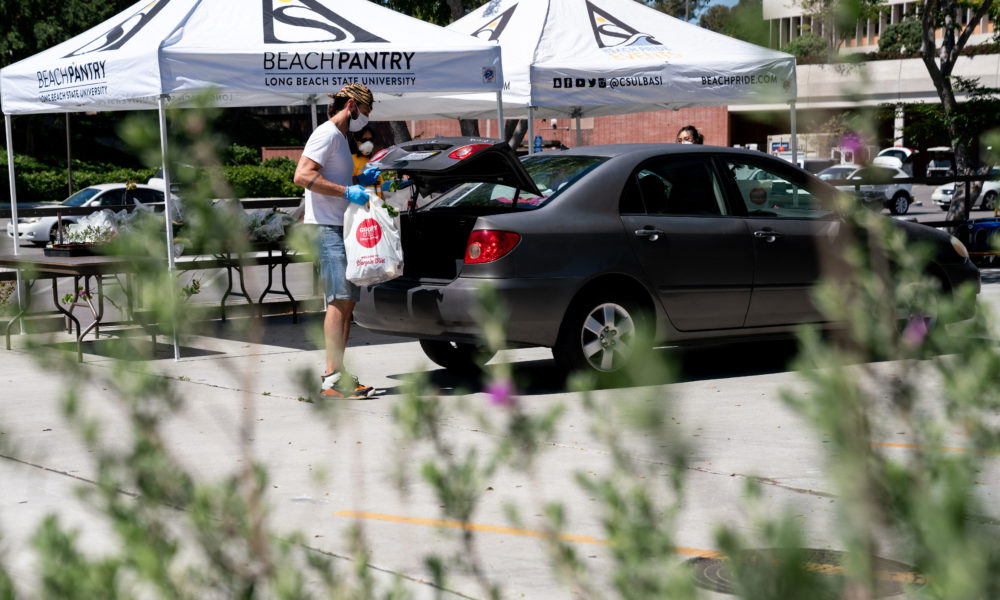One by one, students pulled up in their cars, parked and waited on masked-volunteers to pack their trunks with bagged groceries Friday in the parking lot in front of Brotman Hall.
Even the once active Beach Pantry has had to change its everyday operations due to the coronavirus pandemic, changes senior communications manager for Associated Students Inc. James Ahumada said had to be done.
“We recognize that the students have needs that they’re still going to have, if not even more,” Ahumada said.
To accommodate social distancing practices and adhere to Long Beach’s current health order, volunteers have been forced to get creative in their ways to assist the Beach community.
Enlarge

Kevin Chittum/Daily Forty-Niner
Normally located in the University Student Union, the Beach Pantry has been shifted to a pop-up drive-thru service where currently enrolled students at Long Beach State can drive up and receive the same goods and groceries they were once able to pick up themselves.
“I can say that our community is coming out strong for students at Long Beach State,” Ahumada said. “I think we’re getting a lot of donations and it only continues.”
Ahumada said that ASI decided to host the pop-ups to continue to provide support to students in need, especially during this time of crisis.
“We do know it’s in high demand,” Ahumada said. “So we’re trying to do it as frequently as possible like once a week.”
Currently, students can only receive food at the pop-up if they have previously registered. Each session can serve up to 200 students at a time.
Enlarge

Kevin Chittum/Daily Forty-Niner
Students have been showing their appreciation to the Beach Pantry volunteers for their help and hard work via email or through social media.
“But we don’t do it for that,” Ahumada said. “We just do it to continue to serve our student population.”




